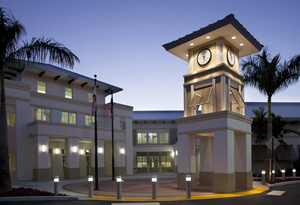Wellington’s Equestrian Preserve Committee continued Wednesday, Nov. 6 to explore the accuracy of the data that has been accumulated from various venues in and around Wellington to not only calculate an accurate number of horses that stable in the community during the winter season, but also to see how the horse industry is doing.
In November 2018, the Equestrian Preserve Committee presented its Equestrian Plan of Action to the Wellington Village Council. Part of its goal was to develop better data to better understand how the equestrian industry impacts Wellington, and, therefore, assist in planning for short-term and long-term needs.
Assistant Planning, Zoning & Building Director Michael O’Dell noted the objectives of collecting the data in the report. “One of the goals and objectives of this report was to find that baseline that we can measure on a yearly basis,” O’Dell said. “When we talk about data gathering — and being able to measure it year in and year out — it has to be the same information. When you are gathering the information, know what you are gathering.”
While counting horses in the sports of show jumping and dressage is a fairly straightforward collection of data, the sport of polo is not organized the same way.
When it comes to polo, counting horses versus counting teams was a key topic discussed. Equestrian Preserve Committee Chair Jane Cleveland explained her interpretation.
“We have the manure count, which are actual horses,” Cleveland said. “The state of the industry is basically how the industry is doing. We must measure the state of the industry, so next year we can compare.”
O’Dell agreed that once the methods are determined, it will make the process easier in the future.
“What we are learning as we do these studies is these are the building blocks for next time,” O’Dell said. “The idea of the teams for polo, seems to be one methodology of tracking that industry through the teams participating in tournaments.”
Equestrian Sport Productions President Michael Stone was invited to discuss the data with the committee. He expressed concerns with the methodology, particularly given that the sport of polo is in a state of flux due to recent changes by the United States Polo Association.
“What will you do with the data?” Stone asked. “What are you going to do with it? Say, the USPA changes its mind and goes back to 26-goal tournaments, and you go from 14 teams to four teams. I’m not sure what you are trying to achieve. If it does drop, what is the village going to do?”
Cleveland explained that the information was important so that the committee could make recommendations to the council, as well as gauge how Wellington is doing compared to other equestrian areas, such as Ocala.
“It’s to measure the health of the different sports in Wellington,” Cleveland said. “Does the village need to be doing more than it is doing to support some of these sports?”
Committee Member Annabelle Garrett explained some of the ideas behind gathering the data.
“No one has ever studied how the [horse] industry has affected the businesses, as well as the fact that there is truly in Wellington, the equestrians and the non-equestrians,” Garrett said. “Some non-equestrians are often like, ‘They can all leave, and we will be fine.’ But, in reality, that’s not true. We want to be able to present something to the council that shows how important this is to our village. If we want to keep people here instead of going to Ocala, or staying in Europe, collectively, we all have to think about what needs to be done here, looking at it from a community perspective of inclusiveness rather than us versus them.”
Cleveland added that they will have to look beyond Wellington and work with other communities in order to continue to grow the horse industry and find expanded resources for stabling and more affordable land.
Stone agreed that stabling requirements have changed in recent years. “A trend that is very noticeable is that more and more people are moving to Loxahatchee,” Stone explained. “It’s too difficult to build barns in Wellington. People don’t want to do it. There is land available [in Wellington], but it’s very expensive. Land in Loxahatchee is half the price. We have noticed that our stabling numbers have gone down over the last five years because less and less people are stabling on the show grounds. They used to stay the whole period at the horse show, but now they rent four or five stalls, and they circulate their horses through.”
Equestrians are moving their horses around much more than they used to, Stone added.
“There are shows in Ocala,” Stone said. “There are shows in California and Europe. So, people are tending to move their horses much more than they used to. People are staying, but not the horses. The insurance policy at the moment is that people who have bought are invested into Wellington.”
While that means the industry is not going anywhere in the near future, it must be protected over the long term.
“This industry is important to all of us,” Cleveland said. “None of us can take it for granted.”





